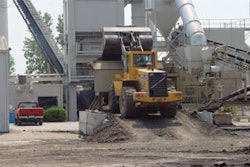Recent reports on global warming, combined with higher oil prices and growing public awareness, have led to outcry for more environmentally sound industry practices. The construction industry is certainly no exception to these demands.
Yet, understanding what steps your company should take to become more "eco-friendly" can be a challenge. Part of the problem is understanding what "going green" really means for your business.
It depends, in part, on the type of construction you perform. If you're involved in educational, institutional or industrial building projects, green building typically starts before the ground is broken. Various project owners are now striving for certification under programs such as Leadership in Energy and Environmental Design (LEED), developed by the U.S. Green Building Council (USGBC). According to the USGBC, LEED "promotes a whole-building approach to sustainability by recognizing performance in five key areas of human and environmental health: sustainable site development, water savings, energy efficiency, materials selection and indoor environmental quality."
The program encourages owners, architects, engineers, contractors and others involved in a project to come together in the design stage to identify and evaluate methods, materials and processes that can ensure the most environmentally friendly structure possible. Once the project begins, the contractor must then utilize eco-friendly practices (i.e., recycling waste material) throughout construction.
Yet, you don't have to be qualifying for LEED certification to be more environmentally conscious on your jobsites. Any contractor can implement eco-friendly practices into its operations. And in certain cases, you may actually reduce your costs and enhance your profit potential in the process.
Reducing the volume of waste hauled to landfills is a case in point. Not only is it environmentally sound to reuse or recycle C&D materials, less waste means lower dumping fees. Many contractors have also discovered new revenue streams selling construction byproducts, such as rebar and other scrap metals, crushed concrete or asphalt (for road base), wood chips/mulch, etc. Others have created a market niche by using waste products in unique ways. For example, FNF Construction, Tempe, AZ, has become a leader in recycling used tires into rubberized asphalt.
Even something as mundane as updating your maintenance program can qualify as eco-friendly. Adhering to regular service intervals keeps equipment in peak operating condition, optimizing fuel economy. Using oil analysis may permit you to extend fluid and/or filter life, reducing oil consumption and waste generation. Closely monitoring wear may enable you to get more life from tires, reducing the volumes plugging up landfills. And optimizing equipment replacement cycles can regularly bring new, more fuel-efficient equipment, with the latest emissions-reducing technology, into your fleet.
As the pressure continues to mount, the question is no longer whether to go green, but how to get there. It pays to investigate options that are not only environmentally friendly, but have the potential to reduce costs - and add profits - to your business.
















